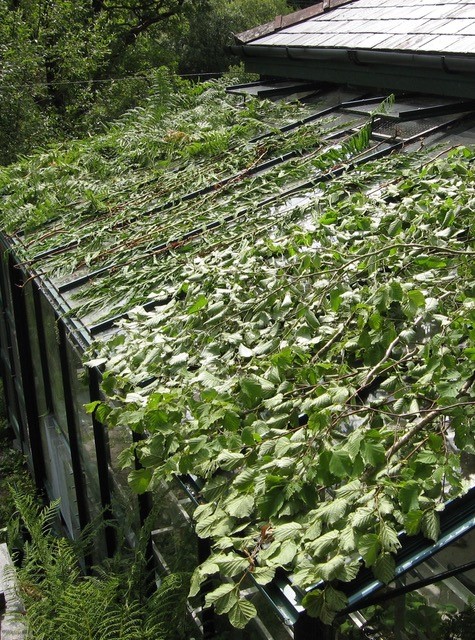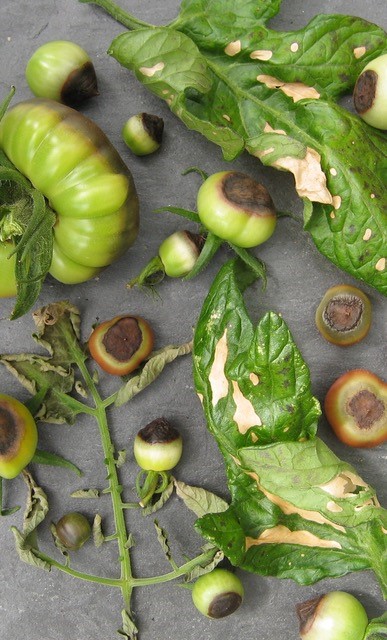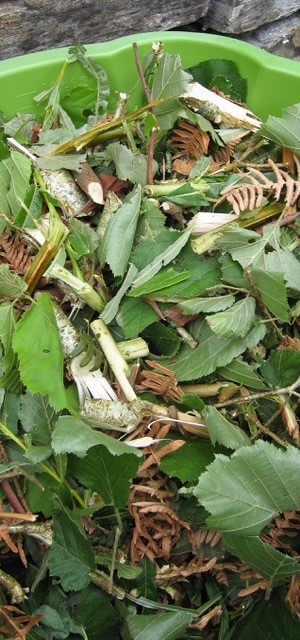Grow your own greenhouse shading: nature offers earth-friendly alternatives to parched plants and plastic pollution.
Since the end of May, in most parts of the UK, it’s been hard to pin down the oft-cited ‘joy of greenhouse gardening’. Right now, even with a sun hat on, surely ‘hell’ is the most apt substitute for ‘joy’. Like the singeing summers of 1976 and 2003, this one is proving a challenge for gardeners – whether we’re growing indoors or out. Disturbingly, severe and unprecedented heatwaves and drought are now a global phenomenon, with all-time temperature records breaking like the brittle twigs of stressed, dying trees. And July’s promise for parts of the UK? More of the same.

Here in normally rain-blessed North Wales, my water tank, whose hollow echo was signalling weeks sans rain, has just been topped up; it’s now sounding a dull thud when tapped. But a lack of roof-harvested, low-energy rainwater has been the least of my problems; it’s the incessant, searing sunshine that’s been frying plant and human tissues alike. It was one of the 30°C-plus days, when it felt like my face was being griddled, that spurred me into SOS – Slap On Shading – mode (and that was the temperature outside). As my skin sizzled, so did my tomatoes, their leaves, flagging and limp, scorching before my eyes. It wasn’t a lack of water – they had ample – but a potent combination of not being able to suck it up fast enough (triggering truss-wrecking blossom end rot) and the fierce intensity of the sun magnified by glass. It was too much – for me and for my plants.
Somewhere in the loft there’s green plastic shade mesh gathering dust, but that’s earmarked for recycling, as part of my own plastic-free-gardening drive. I needed a quicker fix. I saw it. I donned gloves, and I pulled it up. I scooped up great armfuls of it, then laid it on the greenhouse roof. My SOS saviour? Bracken. The moment its lush green fronds were scattered over the glass, the world below was transformed. My tomatoes (and I) were instantly shaded from the sun’s melting midday rays. The temperature fell; placing shading on the outside of the glass stops heat energy from entering your greenhouse. The scorching was stemmed. I kicked my sunburnt heels – I may even have punched the hot, shimmering air. Horticultural inferno abated, a little of the joy of greenhouse growing began to seep back. But only a little, mind; it was – and still is – cooking in there.

There’s no need for plastic mesh, or for garden fleece – which can also be laid over a greenhouse. Both of those decay and fray under the sun’s degrading, UV-rich rays, releasing invisible microplastic pollution into our living world. No need for exorbitantly-priced roller blinds, also made of potentially polluting plastic (or sometimes non-polluting wood). No need for spray-on shading, which probably comes in a plastic bottle. My supra-local SOS cost me nothing, apart from 10 minutes of frond-pulling. It’ll be ready to go again next summer, and every summer after that, as accelerating climate breakdown foists even more extreme weather on us. Home-grown, infinitely renewable greenhouse shading that carries no environmental or financial cost: bring it on. It’s time to get SOSS – Slap On Shade Savvy.
Don’t panic if your sun-struck greenhouse resides in a bracken desert – most do. Other grow-again sunblocks are available. How about rosebay willowherb (Chamaenerion angustifolium), whose other common name, fireweed, is utterly apt. Other tall-stemmed, easy-to-lay weeds will work a treat, too. Or a few leafy, flattish branches of willow, or hazel, or… anything leafy that will lie on your greenhouse roof. If, like mine, yours has a low pitch, even long cut grass, or mowings (assuming your grassed areas aren’t on a no-grow) will work. Even dead, twiggy shoots – such as surplus pea sticks – will help to arrest the sun’s rays.
If you’re still struggling, think outside the pot – think big. Giant rhubarb (Gunnera manicata) has leaves up to 2m across. Three of them would cover my big roof a treat; one sitting on the ridge of a modest structure would suffice. Cut-down stems of burnt-out summer perennials, the taller the better, would work just as well. Windy? Lay the thicker, heavier branches/stems over the thinner ones to anchor them. When dull days come along, you can whip your home-grown shading off and let less scorching sunshine back in. When the skies clear to blue, put it back on.

Still struggling? Check out your cupboards, or your local charity shop, for net curtains that’ll never hang again. Drape them over your greenhouse roof (fixed to laths of wood to hold them in place). With nets, you’ll be getting a triple heatwave-busting whammy; being white, they reflect sunlight, diffusing that which does pass into the greenhouse, and they can be taken on and off in seconds. Go for 100% cotton if you can; that won’t shed any polluting microplastics the way that synthetic fabrics (e.g. polyester) do. Old, white cotton bedsheets do the same trick. The more worn and see-through, the better their light-diffusing qualities. They cost peanuts second-hand and, like nets, will last for yonks.
If you’re happy to stump up more than a few quid, hessian (jute or burlap), which is made from pale brown, biodegradable plant fibres, can be used in the same way. You can buy it off the roll (search online), so it’s easy to get exactly the amount needed. Choose an open weave that will let some light through. Hessian isn’t a polluter either; when it’s worn out, cover it with mulch, or add it to your composting system, and it’ll soon rot away.
Now here’s the real upside to home-grown shading, the cool icing on the SOSS cake. Once the sweltering spell is past, and your dried-out bracken, shoots, branches, or whatever, are out of a job, give them another one. Chopped up – preferably via a shredder – they make a wonderful, renewable, non-polluting and free garden ingredient. As an instant mulch, ready to spread over bare soil, it will help to conserve moisture the next time our gardens are hit by a heatwave. Or add the minced material to your compost heap or bin (wet it first if it’s baked dry), mixing it amongst greener, sappier stuff. If your post-shading pile of shreddings comprises tough, woody chips, you can mix them straight into the top layer of your soil. They’ll boost your soil’s fertility, improve its moisture-retaining ability, and encourage the earth’s ‘internet’ of beneficial mycorrhizal fungi to flourish. Healthy soil means healthier, resilient plants, that will be better prepared to tough out heatwaves in the unpredictable, chaotic decades ahead.
Shading our greenhouses; protecting our plants; cutting plastic pollution; putting troublesome weeds to work; improving our soil’s future health. That sounds to me like earth-friendly, renewable, joined-up and joyous gardening.
Text and images © John Walker
Find John on Twitter @earthFgardener


